| Next up, we would be testing the paper strips for writability when wet. As we can see, the regular paper is significantly more see-through. The graphite pencil doesn't appear to have blurred on either through the soaking or the stirring. The all-weather paper wrote just fine, albeit slightly lighter than when it was bone-dry. Note: I didn't try to make the zig-zag nearly as neat as the first time. The regular paper tore like a tissue paper. Writing lightly enough however, you can make out the word "wet". Even if I were to write everything that lightly, it's still significantly lighter than the wet all-weather writing. |
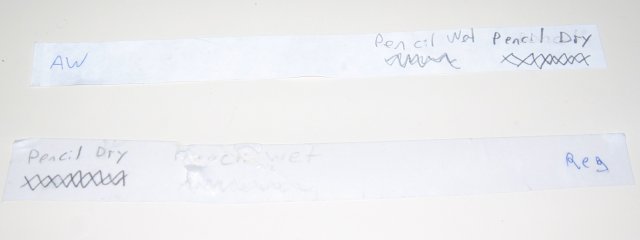 |
| Next came the regular pen. The ink on the all-weather paper didn't bleed AT ALL, but did slightly on the regular paper. It wrote perfectly fine on all-weather, if not better than when it was dry. It almost seemed to show up a little darker. On the regular paper... it once again shredded like nothing. I managed to get a few swirls on that one area that wasn't QUITE as soaked-through as the rest. I had to write very lightly, and thus it showed up very lightly. |
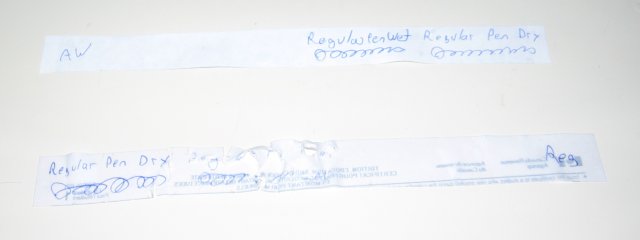 |
| The gel pen actually surprised me. It wrote on the all-weather paper, and blurred only when it hit a droplet of water. If the droplets were rinsed away, the remainder was perfectly readable, if not darker and better than dry writing. The original gel didn't bleed into the paper in the slightest, either. The regular paper didn't fare so well. The original writing bled into the paper a bit, and the new writing was bleeding deep into the paper with every letter. At least it didn't rip the paper when writing, although the strip tore in half when attempting to extract it from the water. |
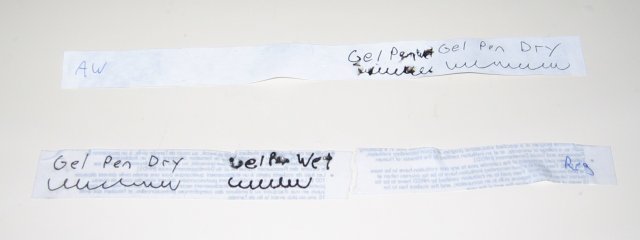 |
| The silver gel pen was another surprise. It didn't even bleed anywhere on all-weather when hitting droplets of water. Again, it seemed to show up better than when it was written on dry paper. Perhaps the texture of the paper has been softened somewhat, making it easier for gel pens to write on it. No bleeding of the ink whatsoever. The regular paper... not so well. It tore in multiple places when removing it. To its credit, the original ink didn't bleed at all. It was however quite difficult to write on it again, and only managed to not tear through at the end of the wavy pattern... again, where it wasn't quite soaked through. THAT ink appeared to bleed into the paper a bit though. |
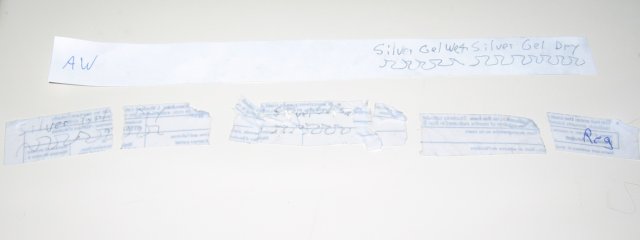
|
| Next up was the smear-test while wet. The pencil smeared a bit easier on the all-weather, and the outer surface of the regular paper just sloughed off, obliterating the pencil on the regular. The ink strangely seemed to smear LESS when written on wet all-weather paper, and again... sloughed off on regular paper. Perhaps the secret to better writing on all-weather paper is to give it a several-minute soaking before use? |
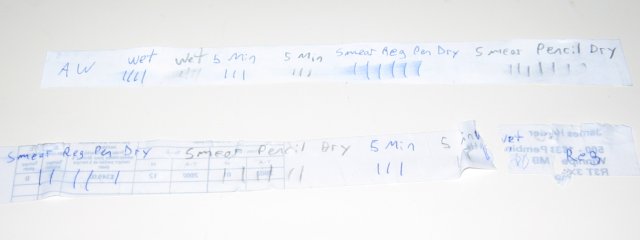 |
| As no surprise, the gel pens clearely didn't enjoy being smeared immediately after writing on wet paper. With the all-weather paper, the black gel pen almost disappeared entirely, but the silver pen held on a bit better. Some of the ink smeared right off like with the black gel, but some of it managed to remain. With the wet regular paper, it predictably sloughed off with both gel and silver pens. However, with the gel pen, it bled in deep enough that even though some of the paper sloughed away, the lines were still visible beneath it. The silver pen was all but obliterated. |
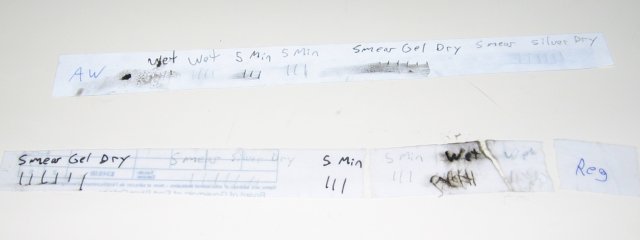
|
| I attempted to toss everything into the glass again and give it another test after an hour. After said hour, the all-weather paper pulled out perfectly, but the regular paper had basically turned into paste. Rather than attempt to sort out that slop, I tossed it and continued the test with the all-weather paper only. |
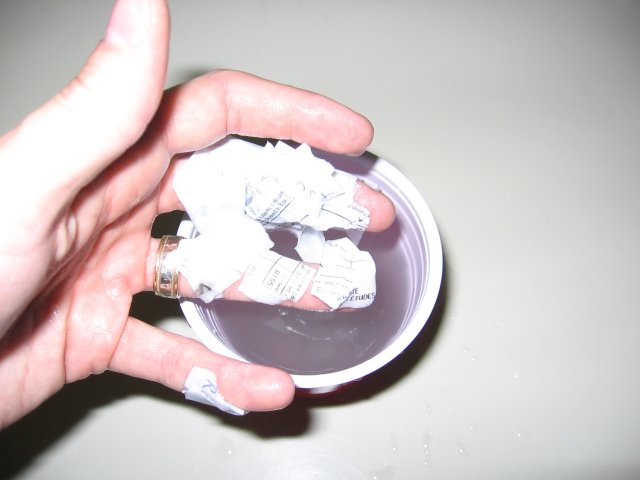 |
The smear test | The wetness test (part 2)
|
